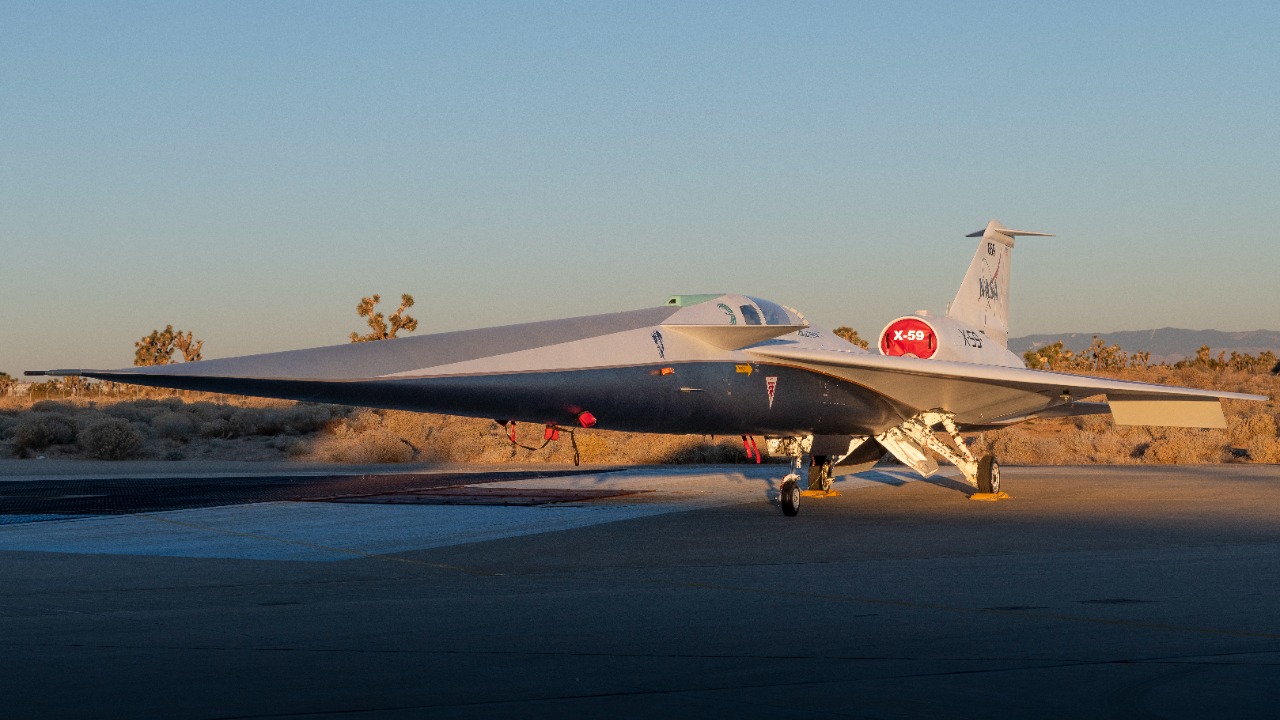
In a groundbreaking achievement, NASA’s X-59 supersonic jet has shattered the sound barrier without the disruptive sonic boom that has long hindered faster-than-sound commercial travel. This event, which took place over the California desert in late October 2025, underscores the innovative design of the aircraft and NASA’s commitment to developing sustainable high-speed flight technologies.
Development of the X-59 Quiet Supersonic Jet
The X-59 is a quiet supersonic jet, a product of NASA’s efforts to overcome the historical barriers to overland supersonic flight caused by sonic booms. The project’s primary focus is to produce a softer “thump” instead of a loud boom when the aircraft exceeds the speed of sound. This innovative approach is a result of a collaboration with Lockheed Martin, aiming to create an aircraft capable of reaching Mach 1.4 speeds while reducing ground noise to around 75 decibels, a significant reduction compared to traditional supersonic jets.
First Test Flight Execution
The X-59 completed its first test flight on October 28, 2025, soaring over the California desert. This was an unofficial first test flight, marking the aircraft’s initial airborne evaluation. The jet embarked on its first super fast, super quiet flight, which lasted approximately 45 minutes and reached altitudes up to 35,000 feet. This successful flight was a significant milestone in the development of the X-59, demonstrating its potential to revolutionize supersonic travel.
Breaking the Sound Barrier Silently
During its first test flight, the X-59 broke the sound barrier without the characteristic boom, showcasing its effective noise-suppression technology. The aircraft transitioned through the sound barrier with minimal audible disturbance on the ground, confirming its ability to fly faster than sound while producing only a gentle pressure wave rather than a shattering sonic boom. This breakthrough is a testament to the innovative design and technology incorporated into the X-59.
Key Technical Features of the X-59
The X-59 boasts a needle-nose design and an elongated fuselage, both of which contribute to shaping shockwaves and reducing boom intensity. The aircraft incorporates advanced shaping techniques to distribute sonic disturbances over a wider area, thereby lowering perceived noise levels. Furthermore, the X-59’s engine and aerodynamic optimizations enable quiet supersonic performance at speeds exceeding 760 mph, a remarkable achievement in aviation technology.
Significance for Aviation Regulations
The X-59’s quiet flight could have significant implications for FAA regulations on supersonic overland travel, which is currently banned due to the noise from sonic booms. Successful tests like this first flight provide valuable data that could support lifting the 50-year-old U.S. ban on commercial supersonic flights over land. By demonstrating reduced noise, the X-59 project paves the way for faster transcontinental routes without causing environmental disruption.
Future Testing and NASA’s Broader Goals
Following the successful first test flight, NASA plans to conduct a series of flights to collect community response data on the quiet boom. The X-59 program aims to validate technologies for a new generation of low-boom supersonic passenger aircraft by the 2030s. Additional test flights will gather acoustic measurements to inform global standards for sustainable supersonic aviation, marking a significant step towards the future of high-speed travel.
More from MorningOverview